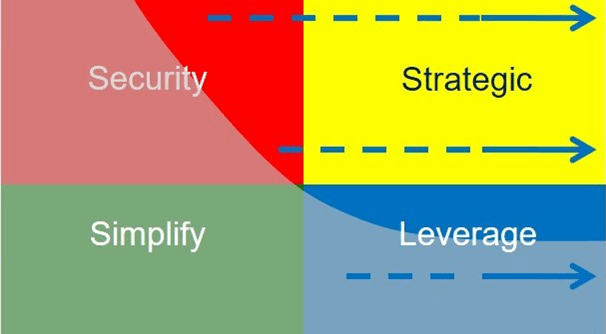First of all a question for buyers, be you CEOs, CIOs, HoEs, PMs, CatMans etc.
“Do you have unlimited time and resources?”
No, of course not!
Our time and resources are limited, therefore we need to apply pragmatic Effort/Benefit considerations to all activities including SRM, using KPIs etc etc
Secondly, let’s make a clear distinction between Performance Management and Relationship Management
Sorry to offend all the theorists by waking them up, but:
We haven’t got time for a cosy Win/Win chat with every Supplier*
If we can define, monitor and achieve sufficient performance without such chats, fine. It’s good, simple, day-to-day business for all. If, however, we need to collaborate to solve significant problems or develop a new idea, I’ll enthusiastically pull up a chair…
Referring back to my post Procurement Basics: Why Supply Positioning is so useful a.k.a Spend/Risk we know it gives us strong indicators for many activities and considerations, including:
- Supplier Performance
- Importance of Measures (KPIs)
- Resource and activity focus
So let’s use it…

I suggest my clients begin by considering three basic levels of Supplier
Relationship Management activity:
1. Pro-active SRM
Develop and actively manage mutually beneficial relationships with those Suppliers that are genuinely strategically important and where a strong relationship is essential to ensure our business is fully supported
Number: Tiny
2. Monitor/Maintain SRM
Build/maintain adequately strong relationships with a select group of Suppliers for those Categories which:
- Are important to support our business
- Have high potential negative impact from non-performance
- Have high dependency for us and high switching costs
- Are proprietary systems/technology
- Are part of restricted supply market (few suppliers and no alternative products)
- Represent alternative/emerging technology with significant potential for our business
Number: Few
3. None to Minimal SRM
For the majority of Categories there will be tactical relationships in place (i.e. day to day interaction, periodic reviews – perhaps) with the Suppliers and there is no need for specific SRM activity. The focus here should be on compliance and performance-to-contract (of course the latter applies to 1 & 2 above as well)
Number: Vast majority
Note: I’ve dotted the line on the Relative Spend axis; less money (bearing in mind risk) => less/no SRM
N.B. Similar logic applies to setting and measuring KPIs^, holding regular meetings etc
Yes, I know this is stating the obvious, but key points:
- Be realistic, consider the effort/benefit and where best to use your time
- Ask yourself:
‘when this goes wrong, how painful and expensive is it going to be?’ or/and
‘If we can get this right, how useful and profitable is it going to be?’ - If the answer to the above is ‘extremely’ (once or more) – consider whether pro-active SRM will ensure:
It remains a potential Risk and does not become a nasty Issue or/and
We can take advantage of the opportunity - If pro-active SRM will help – keep your pragmatic head screwed on!
(The above is an extract from my extensive library and Sourcing Process, for further details please let me know)
If your Procurement Policy, Sourcing process, Skill levels etc. need a rethink – give me a call, I can help you
I hope this is of interest and useful; please feel free to Comment, Share and Like (or shoot it down!) Please also have a look at my other posts; mostly about buying stuff, some more tongue-in-cheek
Thanks and regards
Andy
*Please do not delude yourself for one second; most Sales teams attend cosy chats for more business, not Win/Win opportunities








